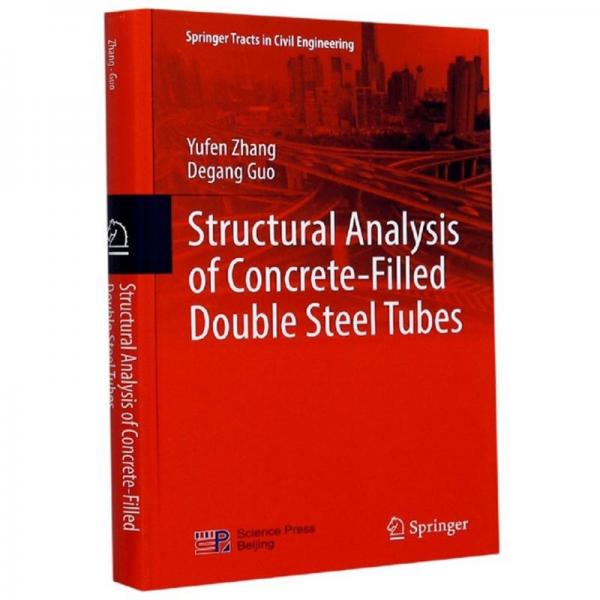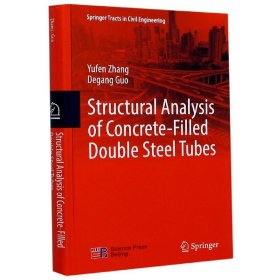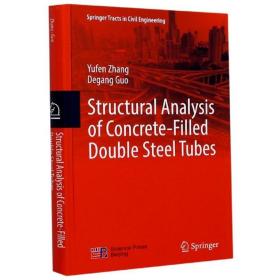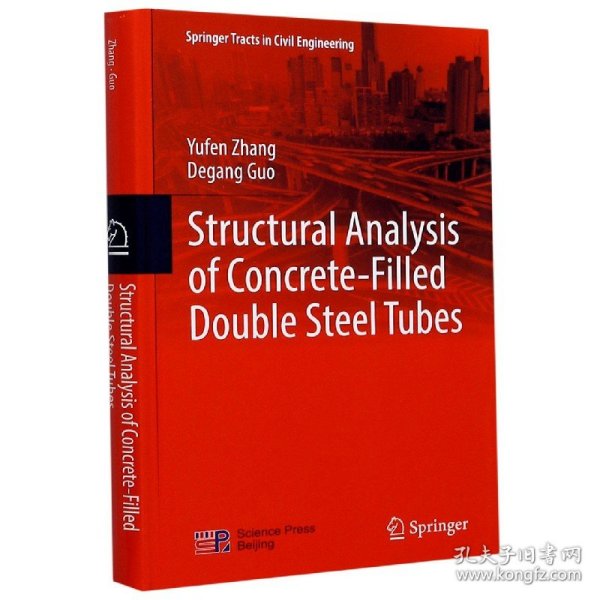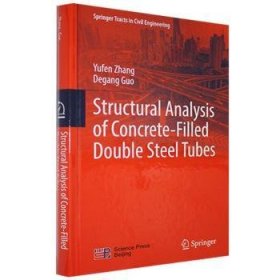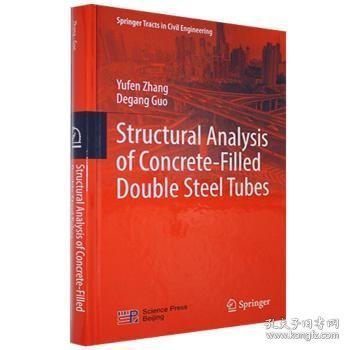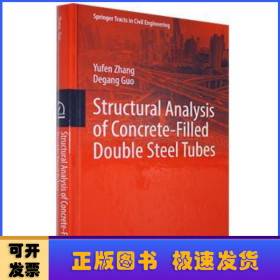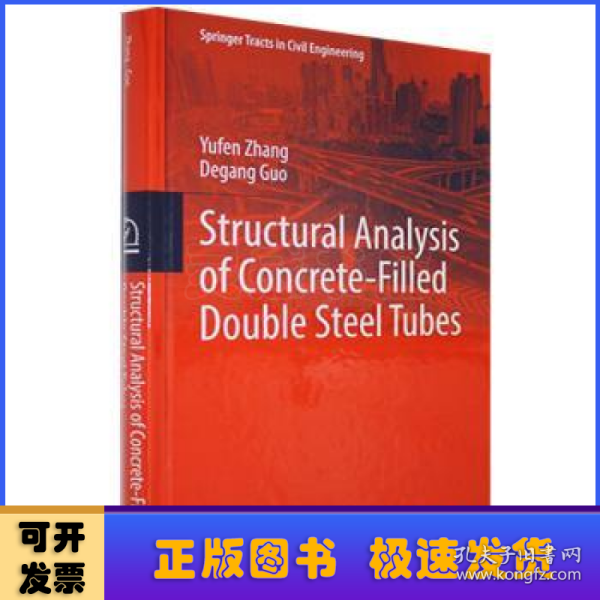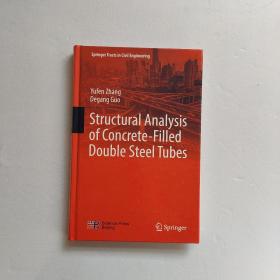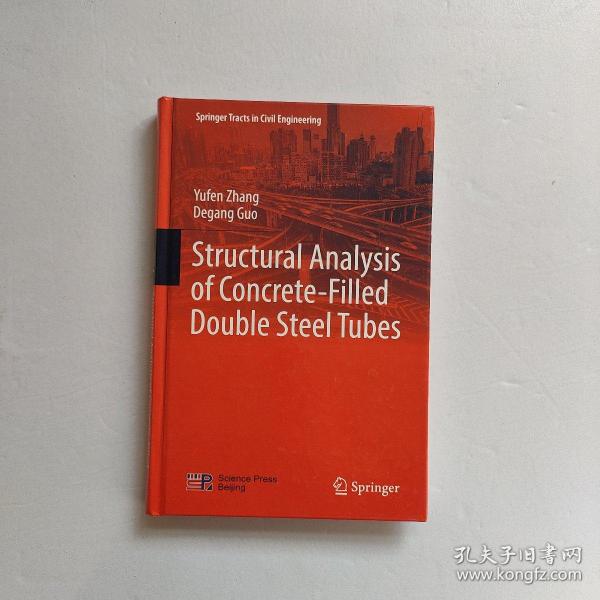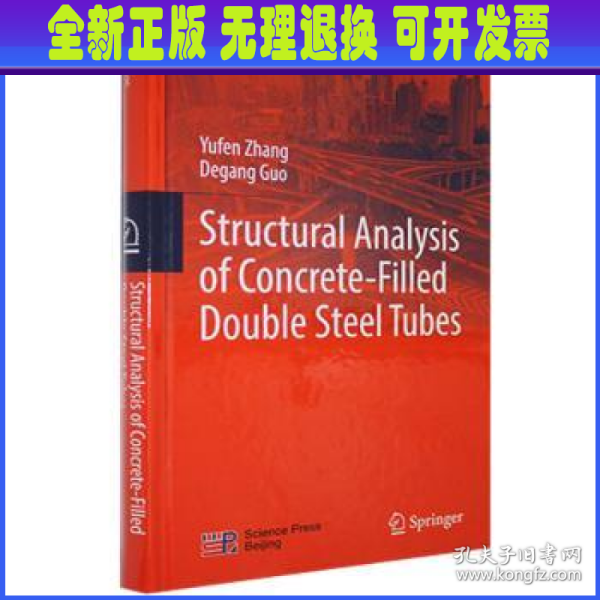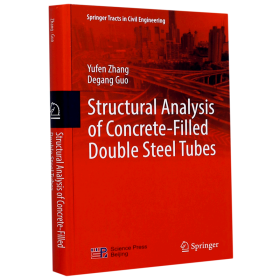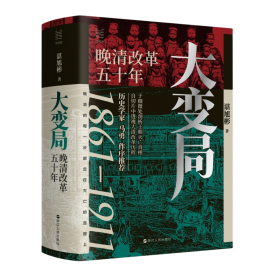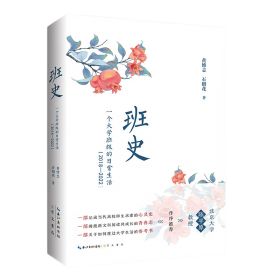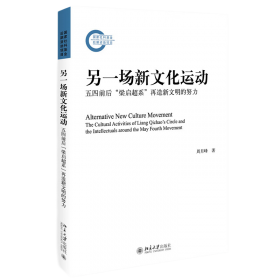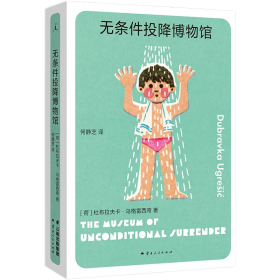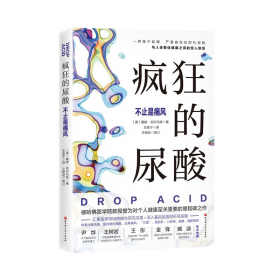StructuralAnalysisofConcrete-FilledDoubleSteelTubes
出版时间:
2020-01
版次:
1
ISBN:
9787030662941
定价:
180.00
装帧:
精装
开本:
16开
纸张:
胶版纸
页数:
234页
-
《Structural Analysis of Concrete-Filled Double Steel Tubes》对混凝土双钢管(CFST)基本方面的理论和应用进行了清晰,全面的概述。提出了所有分析和设计应用,其中涉及工程中经常遇到的机械部件和结构部件实践。这本专着是为结构和土木工程师,学生和学术研究人员准备的,他们希望跟上新的钢管混凝土(CFST)技术的发展。 1 Introductions
1.1 Principles of Concrete-Filled Steel Tube (CFST)
1.2 Applications and Developments of CFST
1.3 Researches on CFST
1.4 Connections in CFST Structures
1.4.1 Through-Beam Joint and Through-Column Joint
1.4.2 Exterior Stiffening Ring Joint (External Diaphragm Joint)
1.4.3 Diaphragm-Through Joint
1.4.4 Vertical Stiffener Joint
1.4.5 Welded Haunch Joint
1.4.6 Anchored T-Plate Joint
1.4.7 Bolted Joint
1.5 Reinforced CFSTs
1.5.1 I: CFST Reinforced by Inner Steel Tube (Including CFDST)
1.5.2 H: CFST Reinforced by Inner Section Steel
1.5.3 III: CFRP-Confined CFST
1.5.4 IV: Hollow CFDST
1.5.5 Applications of CFDST
1.6 Monograph Organization
References
2 Analysis of Axial Bearing Capacity
2.1 Tests and Phenomena
2.2 Calculation by Limit Equilibrium Method
2.2.1 Limit Equilibrium Method
2.2.2 Unified Strength Theory
2.2.3 Elastoplastic Limit Analysis
2.3 Calculation by Unified Theory of CFST
2.3.1 Method of Unified Theory of CFST
2.3.2 Equivalent Confinement Coefficient
2.3.3 Calculation Formulas
2.4 Validation and Analysis
2.5 Parametric Study for CFDST Column
2.5.1 Influence of Inner Tube
2.5.2 A Simple Model Used in Optimum Design
2.5.3 Contribution of Inner Tube
2.6 Summary
References
3 Compressive Stiffness of CFDST Columns
3.1 Compressive Stiffness of CFST
3.2 Simple Superposition Method
3.3 Calculation by Unified Theory of CFST
3.4 Elasticity Solutions
3.4.1 Basic Model
3.4.2 Energy Theory
3.5 Verification of Theoretical Calculations
3.5.1 Comparison with Experimental Results
3.5.2 Parametric Study
3.6 Summary
References
4 Frame Joint Forms in CFDST Structures
4.1 Ring-Beam Joint with Discontinuous Outer Tube
4.2 External Diaphragm Joint
4.3 Vertical Stiffener Joint
4.4 Anchored Steel Beam Joint
4.5 High Strength Bolts-T-Plate Joint
4.6 Summary
References
5 Ring Beam Joints to RC Beams
5.1 Description of Connection System
5.2 Test Specimens and Material Properties
5.3 Test Setup and Measurement Scheme
5.4 Discussion of Test Results
5.4.1 Failure Modes
5.4.2 P-A Hysteresis Loops
5.4.3 Analysis of Ductility
5.4.4 Load-Strain Curves
5.5 FE Modeling
5.5.1 Comparison between Test and FEM Results
5.5.2 Parametric Studies
5.6 Summary
References
6 Vertical Stiffener Joints to Steel Beams
6.1 Structure Forms and Features of the Connection
6.2 Test Specimens and Material Properties
6.3 Test Setup and Measurements
6.4 Discussion of Test Results
6.4.1 Failure Modes
6.4.2 P-A Hysteresis Loops
6.4.3 Parametric Analysis
6.4.4 Analysis of Ductility
6.4.5 Degradation
6.4.6 Energy Dissipation
6.5 Finite Element Modeling
6.5.1 Establishment of Finite Element Model
6.5.2 Analysis of Loading Process
6.5.3 Verification of Finite Element Modeling
6.6 Calculation of Bearing Capacity
6.6.1 Shear Force Transfer Model and Shear Resistance in Panel Zone
6.6.2 Moment Transfer Model and Bending Resistance
6.6.3 Validation and Analysis
6.6.4 Discussions
6.7 Summary
References
7 External Diaphragm Joints to Steel Beams
7.1 Description of the Connection System
7.1.1 Design of New External Diaphragm Joints
7.1.2 Fabrication of Specimens
7.2 Material Properties and Test Procedures
7.2.1 Material Properties
7.2.2 Test Apparatus and Procedures
7.3 Experimental Observations and Failure Modes
7.3.1 Beam Failure Mode
7.3.2 Column Failure Mode
7.4 Test Results and Discussion
7.4.1 Hysteresis Loops
7.4.2 Analysis of Ductility
7.4.3 Effects of Different Test Parameters
7.4.4 Stiffness Degradation
7.4.5 Energy Dissipation
7.5 Data Analysis Based on DSCM
7.5.1 DSCM and Measurement Setup
7.5.2 Data Processing
7.5.3 Joint Stiffness Analysis
7.5.4 Relationship of Shear Force-Deformation in Panel Zone (V-y)
7.5.5 Strain Nephogram in Panel Zone
7.6 Summary
References
8 Anchored Web Joints with Haunches
8.1 Test Overview
8.1.1 Specimens Design
8.1.2 Materiai Properties
8.1.3 Test Device and Loading System
8.1.4 Arrangement of Measuring Points
8.2 Numerical Analysis Model
8.2.1 Constitutive Model
8.2.2 Element Selection and Division
8.2.3 Interactions, Boundary Conditions and Loading Modes
8.3 Comparison Between Test and Numerical Simulation Results
8.3.1 Destruction Process
8.3.2 Strain and Stress Responses
8.3.3 Hysteresis Loops
8.3.4 Joint Energy Dissipation Capacity
8.4 Parametric Analysis
8.4.1 Influence of Joint Construction
8.4.2 Influence of Steel Beam Strength
8.4.3 Influence of Beam-to-Column Linear Bending Stiffness Ratio (K)
8.4.4 Influence of Concrete Strength
8.4.5 Influence of Axial Compression Ratio
8.5 Summary
References
9 Blind Bolted T-Plate Joints in Prefabricated Construction
9.1 Specimens Design
9.2 Material Properties
9.3 Test Setup and Loading Scheme
9.3.1 Test Setup
9.3.2 Arrangement of Measurement Points ..
9.4 Test Process and Phenomena
9.4.1 Failure Process
9.4.2 Hysteresis Loops and Energy Dissipation Capacity
9.4.3 P-A Skeleton Curves
9.4.4 Bearing Capacity and Ductility
9.4.5 Strain Responses of Inner Steel Tubes
9.5 Finite Element Modeling
9.5.1 Establishment of Finite Element Model
9.5.2 Simulation of Failure Modes
9.5.3 Comparison of Ultimate Bending Capacity Between Test and FEA Results
9.5.4 Stress Responses of Steel Tubes and Bolts
9.6 Calculation of Ultimate Bending Capacity
9.6.1 Establishment of a Tensile T-Plate Model
9.6.2 Working Mechanism of Stiffening Ribs
9.6.3 Verification by Test Data and Numerical Results
9.6.4 Analysis of Parameter Influence
9.7 Summary
References
10 Conclusions and Prospects
10.1 Conclusions
10.2 Prospects
-
内容简介:
《Structural Analysis of Concrete-Filled Double Steel Tubes》对混凝土双钢管(CFST)基本方面的理论和应用进行了清晰,全面的概述。提出了所有分析和设计应用,其中涉及工程中经常遇到的机械部件和结构部件实践。这本专着是为结构和土木工程师,学生和学术研究人员准备的,他们希望跟上新的钢管混凝土(CFST)技术的发展。
-
目录:
1 Introductions
1.1 Principles of Concrete-Filled Steel Tube (CFST)
1.2 Applications and Developments of CFST
1.3 Researches on CFST
1.4 Connections in CFST Structures
1.4.1 Through-Beam Joint and Through-Column Joint
1.4.2 Exterior Stiffening Ring Joint (External Diaphragm Joint)
1.4.3 Diaphragm-Through Joint
1.4.4 Vertical Stiffener Joint
1.4.5 Welded Haunch Joint
1.4.6 Anchored T-Plate Joint
1.4.7 Bolted Joint
1.5 Reinforced CFSTs
1.5.1 I: CFST Reinforced by Inner Steel Tube (Including CFDST)
1.5.2 H: CFST Reinforced by Inner Section Steel
1.5.3 III: CFRP-Confined CFST
1.5.4 IV: Hollow CFDST
1.5.5 Applications of CFDST
1.6 Monograph Organization
References
2 Analysis of Axial Bearing Capacity
2.1 Tests and Phenomena
2.2 Calculation by Limit Equilibrium Method
2.2.1 Limit Equilibrium Method
2.2.2 Unified Strength Theory
2.2.3 Elastoplastic Limit Analysis
2.3 Calculation by Unified Theory of CFST
2.3.1 Method of Unified Theory of CFST
2.3.2 Equivalent Confinement Coefficient
2.3.3 Calculation Formulas
2.4 Validation and Analysis
2.5 Parametric Study for CFDST Column
2.5.1 Influence of Inner Tube
2.5.2 A Simple Model Used in Optimum Design
2.5.3 Contribution of Inner Tube
2.6 Summary
References
3 Compressive Stiffness of CFDST Columns
3.1 Compressive Stiffness of CFST
3.2 Simple Superposition Method
3.3 Calculation by Unified Theory of CFST
3.4 Elasticity Solutions
3.4.1 Basic Model
3.4.2 Energy Theory
3.5 Verification of Theoretical Calculations
3.5.1 Comparison with Experimental Results
3.5.2 Parametric Study
3.6 Summary
References
4 Frame Joint Forms in CFDST Structures
4.1 Ring-Beam Joint with Discontinuous Outer Tube
4.2 External Diaphragm Joint
4.3 Vertical Stiffener Joint
4.4 Anchored Steel Beam Joint
4.5 High Strength Bolts-T-Plate Joint
4.6 Summary
References
5 Ring Beam Joints to RC Beams
5.1 Description of Connection System
5.2 Test Specimens and Material Properties
5.3 Test Setup and Measurement Scheme
5.4 Discussion of Test Results
5.4.1 Failure Modes
5.4.2 P-A Hysteresis Loops
5.4.3 Analysis of Ductility
5.4.4 Load-Strain Curves
5.5 FE Modeling
5.5.1 Comparison between Test and FEM Results
5.5.2 Parametric Studies
5.6 Summary
References
6 Vertical Stiffener Joints to Steel Beams
6.1 Structure Forms and Features of the Connection
6.2 Test Specimens and Material Properties
6.3 Test Setup and Measurements
6.4 Discussion of Test Results
6.4.1 Failure Modes
6.4.2 P-A Hysteresis Loops
6.4.3 Parametric Analysis
6.4.4 Analysis of Ductility
6.4.5 Degradation
6.4.6 Energy Dissipation
6.5 Finite Element Modeling
6.5.1 Establishment of Finite Element Model
6.5.2 Analysis of Loading Process
6.5.3 Verification of Finite Element Modeling
6.6 Calculation of Bearing Capacity
6.6.1 Shear Force Transfer Model and Shear Resistance in Panel Zone
6.6.2 Moment Transfer Model and Bending Resistance
6.6.3 Validation and Analysis
6.6.4 Discussions
6.7 Summary
References
7 External Diaphragm Joints to Steel Beams
7.1 Description of the Connection System
7.1.1 Design of New External Diaphragm Joints
7.1.2 Fabrication of Specimens
7.2 Material Properties and Test Procedures
7.2.1 Material Properties
7.2.2 Test Apparatus and Procedures
7.3 Experimental Observations and Failure Modes
7.3.1 Beam Failure Mode
7.3.2 Column Failure Mode
7.4 Test Results and Discussion
7.4.1 Hysteresis Loops
7.4.2 Analysis of Ductility
7.4.3 Effects of Different Test Parameters
7.4.4 Stiffness Degradation
7.4.5 Energy Dissipation
7.5 Data Analysis Based on DSCM
7.5.1 DSCM and Measurement Setup
7.5.2 Data Processing
7.5.3 Joint Stiffness Analysis
7.5.4 Relationship of Shear Force-Deformation in Panel Zone (V-y)
7.5.5 Strain Nephogram in Panel Zone
7.6 Summary
References
8 Anchored Web Joints with Haunches
8.1 Test Overview
8.1.1 Specimens Design
8.1.2 Materiai Properties
8.1.3 Test Device and Loading System
8.1.4 Arrangement of Measuring Points
8.2 Numerical Analysis Model
8.2.1 Constitutive Model
8.2.2 Element Selection and Division
8.2.3 Interactions, Boundary Conditions and Loading Modes
8.3 Comparison Between Test and Numerical Simulation Results
8.3.1 Destruction Process
8.3.2 Strain and Stress Responses
8.3.3 Hysteresis Loops
8.3.4 Joint Energy Dissipation Capacity
8.4 Parametric Analysis
8.4.1 Influence of Joint Construction
8.4.2 Influence of Steel Beam Strength
8.4.3 Influence of Beam-to-Column Linear Bending Stiffness Ratio (K)
8.4.4 Influence of Concrete Strength
8.4.5 Influence of Axial Compression Ratio
8.5 Summary
References
9 Blind Bolted T-Plate Joints in Prefabricated Construction
9.1 Specimens Design
9.2 Material Properties
9.3 Test Setup and Loading Scheme
9.3.1 Test Setup
9.3.2 Arrangement of Measurement Points ..
9.4 Test Process and Phenomena
9.4.1 Failure Process
9.4.2 Hysteresis Loops and Energy Dissipation Capacity
9.4.3 P-A Skeleton Curves
9.4.4 Bearing Capacity and Ductility
9.4.5 Strain Responses of Inner Steel Tubes
9.5 Finite Element Modeling
9.5.1 Establishment of Finite Element Model
9.5.2 Simulation of Failure Modes
9.5.3 Comparison of Ultimate Bending Capacity Between Test and FEA Results
9.5.4 Stress Responses of Steel Tubes and Bolts
9.6 Calculation of Ultimate Bending Capacity
9.6.1 Establishment of a Tensile T-Plate Model
9.6.2 Working Mechanism of Stiffening Ribs
9.6.3 Verification by Test Data and Numerical Results
9.6.4 Analysis of Parameter Influence
9.7 Summary
References
10 Conclusions and Prospects
10.1 Conclusions
10.2 Prospects
查看详情
-
全新
天津市津南区
平均发货13小时
成功完成率94.46%
-
全新
广东省广州市
平均发货20小时
成功完成率86.24%
-
全新
山东省济宁市
平均发货67小时
成功完成率81.11%
-
全新
广东省广州市
平均发货8小时
成功完成率94.76%
-
全新
浙江省嘉兴市
平均发货10小时
成功完成率94.12%
-
全新
江苏省南京市
平均发货23小时
成功完成率40.86%
-
全新
北京市丰台区
平均发货8小时
成功完成率90.43%
-
全新
北京市通州区
平均发货10小时
成功完成率88.25%
-
全新
北京市朝阳区
平均发货20小时
成功完成率84.63%
-
全新
北京市通州区
平均发货9小时
成功完成率89.31%
-
全新
海南省海口市
平均发货14小时
成功完成率82.72%
-
全新
山东省泰安市
平均发货18小时
成功完成率92.78%
-
全新
上海市黄浦区
平均发货11小时
成功完成率94.42%
-
全新
北京市朝阳区
平均发货14小时
成功完成率84.45%
-
全新
广东省广州市
平均发货7小时
成功完成率88.68%
-
九品
北京市昌平区
平均发货21小时
成功完成率96.08%
-
全新
河北省保定市
平均发货7小时
成功完成率91.81%
-
全新
河北省保定市
平均发货8小时
成功完成率87.5%
-
全新
广东省广州市
平均发货17小时
成功完成率87.04%
-
全新
北京市东城区
平均发货11小时
成功完成率95.75%
-
全新
北京市房山区
平均发货21小时
成功完成率67.74%
-
全新
湖北省武汉市
平均发货19小时
成功完成率72.86%
-
九五品
湖北省武汉市
平均发货18小时
成功完成率84.14%
-
全新
河北省保定市
平均发货10小时
成功完成率93.97%
-
全新
广东省广州市
平均发货9小时
成功完成率87.11%
-
全新
海南省海口市
平均发货9小时
成功完成率80.82%
-
全新
河北省沧州市
平均发货14小时
成功完成率76.19%
-
全新
湖北省武汉市
平均发货24小时
成功完成率64.58%
-
全新
山东省威海市
平均发货14小时
成功完成率90.43%
-
九五品
湖北省武汉市
平均发货28小时
成功完成率79.63%

 占位居中
占位居中

